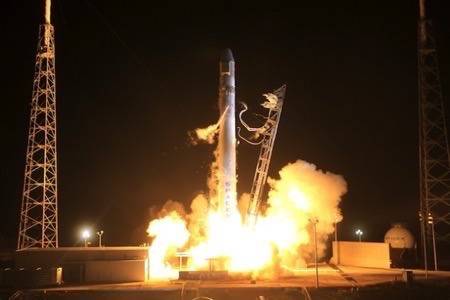
Last night, the SpaceX Falcon 9 rocket blasted off from Cape Canaveral, Florida. It’s carrying a reusable spacecraft called Dragon, which can dock with the International Space Station. It’s unmanned this time, but it’s capable of carrying cargo or crew. This will be the first time a spacecraft built and launched by a private company docks with the station. It’s a new era.
The move toward private spaceflight has forged ahead with NASA’s blessing. After retiring the space shuttle fleet this year, NASA wants to outsource these regular missions to private companies. SpaceX has stepped up. Founded by South African superhero Elon Musk (who also brought us the Tesla Roadster electric car), SpaceX has now proven that its Falcon rockets can succeed the space shuttle.
The launch was initially planned for Saturday, May 19, but it was aborted with less than a second left on the clock. A flight computer detected an unusual reading in one of the Falcon’s nine engines and shut down the launch automatically, just as the rocket flared to life. Engineers repaired a faulty check valve in a matter of hours, and the launch was rescheduled for Monday. It went off without a hitch.
This was the third successful launch of the Falcon 9, and its second stage delivered the Dragon capsule into orbit. It will now rendezvous with the International Space Station and perform a series of docking tests. If successful, the space station crew will grab the Dragon with a robotic arm and guide it in to dock.
“We obviously have to go through a number of steps to berth with the Space Station,” Musk said at the post-launch press conference, “but everything is looking really good, and I think I would count today as a success no matter what happens with the rest of the mission.”

The Dragon is designed to carry cargo or astronauts. It has room for up to seven people on board. NASA has given SpaceX almost $400 million in funding to ensure the success of this program, hoping that these private missions to the space station can become routine.
SpaceX employs around 1,800 people, and it has a $1.6 billion contract with NASA for 12 cargo flights. If this current mission succeeds, SpaceX will begin fulfilling that contract this year.
Images via Space Fellowship and SpaceX

















